#Kowloon Walled City Park
Explore tagged Tumblr posts
Text
Hong Kong Secrets: Uncover The Top 10 Must-Visit Hidden Gems
#best kept secrets Hong Kong#Big Wave Bay#Blade Street in Sheung Wan#cultural spots in Hong Kong#discover Hong Kong#explore Hong Kong#hidden attractions Hong Kong#hidden Hong Kong#Hoi Ha Wan Marine Park#Hong Kong adventure#Hong Kong exploration#Hong Kong hidden gems#Hong Kong local experiences#Hong Kong secret locations#Hong Kong travel guide#Hong Kong unusual attractions#Kowloon Walled City Park#lesser-known Hong Kong#Museum of Medical Sciences#off the beaten path Hong Kong#Ozone Bar#Peng Chau Island#quiet spots in Hong Kong#secret Hong Kong travel#secret spots in Hong Kong#Sun Yat Sen Memorial Park#Tai Long Wan#Ten Thousand Buddhas Monastery#unique places in Hong Kong#Yuen Po Street Bird Garden
1 note
·
View note
Text
The weird and wonderful history of Kowloon as a digital interactive space - Part I

The Kowloon Walled City was one of the most emblematic locations in Hong Kong due to its irregular, fast-paced and largely ungoverned growth within a minute parcel of land. During the occupation of Hong Kong Island by the British in the mid 18th century, the Qing authorities surrounded the area with walls, turning it into a strategic position from where to closely inspect the foreign nation's covert activities. Almost a century later, during World War II, the area was seized by the Japanese, who tore down the walls and repurposed the stone for the construction of a nearby airport.
After the war, China would eventually regain possession of the city, though the disinterest of local authorities in addressing its increasing social disturbances placed it in a downward path to a state of utter degradation. By the 1970s, Kowloon had become the epicentre of Hong Kong's criminal underworld, dominated by a handful of its most vicious Triads.
Towards the last years of its existence, the ancient settlement was as a precarious heap of concrete, sheltering nearly half a million people within less than seven acres of land. Cultural and political changes in China made it increasingly difficult for this urban anomaly to remain unaddressed. In the late 1980s, an action plan was put together aiming to relocate its inhabitants and reconvert the real estate into an inner-city park. Stories about residents refusing to leave their unsafe and unsanitary homes were featured prominently in newspapers, baffling readers all over the world. Once the single most densely populated area in the world, this enclave was an architectural aberration whose disconcerting aesthetic influenced numerous works of art in different fields of creation; including a small yet consequential number of video games that briefly reference or prominently feature this abominably transfixing space.
九龍島 (Kyu-Ryu-Tou) - Starcraft - 1986
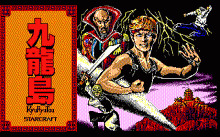
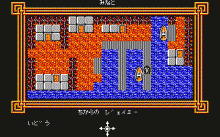
The year is 2025. An arms dealer escalates the tensions between East and West by developing a genetic weapon in a secret base at Kowloon Island. The United Nations react by sending in their best man, Jamie Starr. Unrelated to the Walled City itself, the first game to be located in the Kowloon peninsula - and indeed include the name as a part of its title - is this obscure turn-based RPG, Kyu-Ryu-Tou for the NEC PC88 and FM-77 machines. The game is a sequel to Shangai, released the year before, featuring the same protagonist. Starcraft would also go on to produce a third instalment in 1987 named TO.KY.O. Clearly there wasn't much regard here from the developers part for geographic accuracy, as Kowloon is depicted here as being an island. While Hong Kong's southern territory is composed of an actual island, all the different areas named Kowloon are located in the mainland.
Riot City - Westone - 1991
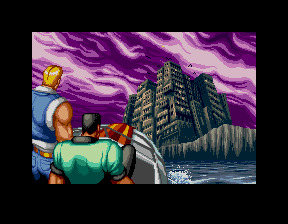
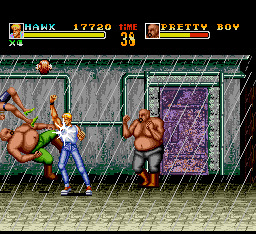
One of the most shameless specimens among a relatively long list of Final Fight clones, Riot City contains subtle references to Kowloon, though never referring to it by name. Two narcotics detectives are assigned with the mission of dismantling a cartel running a crime-ridden located in fictional Riot Island. This recurring yet geographically nonsensical notion of Kowloon as an island comes up here, yet again. The final moment of the introduction sequence for this minor Sega arcade success shows both protagonists approaching a tight cluster of buildings whose source inspiration is quite unmistakable. Because Westone maintained ownership of most of this production's intellectual property, a later port to the PC Engine entitled Riot Zone was made possible with the help of Hudson soft. Kowloon's Gate - Zeque - 1997
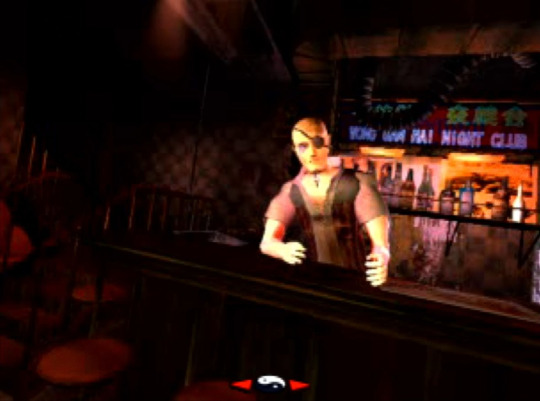
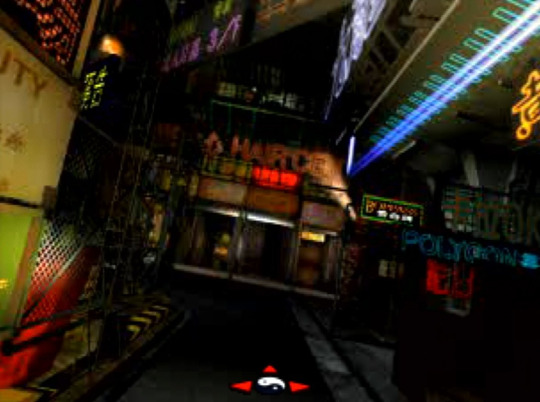
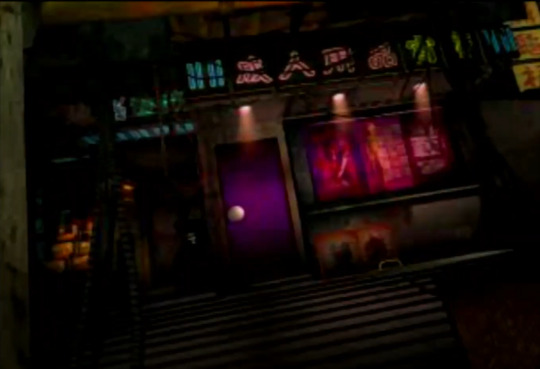
Reviving the Walled City through the lens of cybermystic surrealism, Kowloon's Gate is a dense, daunting adventure masterfully capturing the slum's dark and narrow recesses. This 1997 Japanese Playstation exclusive spans across four discs of unparalleled full motion 3D CGI spectacle, alternating with real-time 3D dungeons brimming with outlandish characters and concepts deeply inspired by Chinese history, geography and cultural traditions.
Ironically, Zeque managed to embed the theme of Feng-Shui, the ancient geomantic art seeking harmony between the individual and their surrounding space, into a story set in the world's most historically untidy district.
SaGa Frontier - Square - 1997
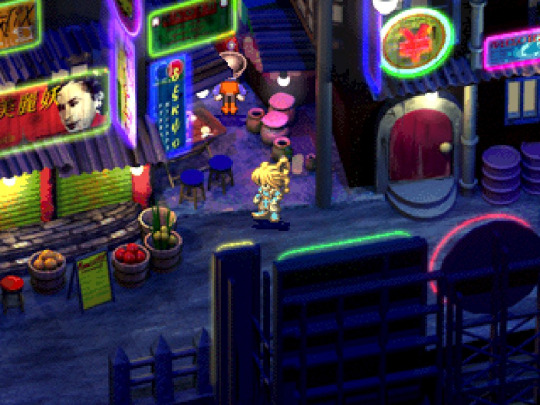
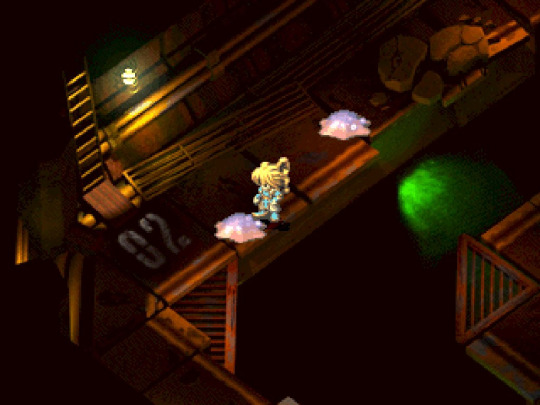
SaGa Frontier takes place in a solar system named The Regions, composed of multiple inhabited worlds for the player to explore, each with its different degree of civilizational development and culture. One of these planets goes by the suggestive name Kūron. Its pervasive neon light signs, food stalls, makeshift cabins and rooftop scaffolding instantly evoke the memory of China’s so-called city of darkness.
Shadow Hearts - Sacnoth - 2001
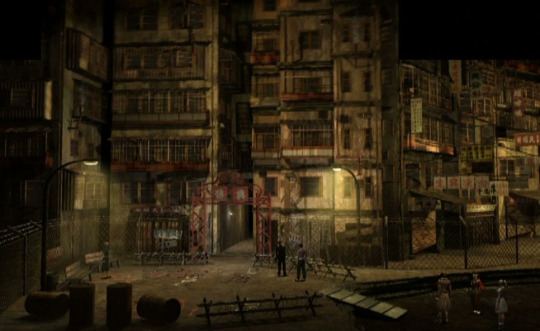
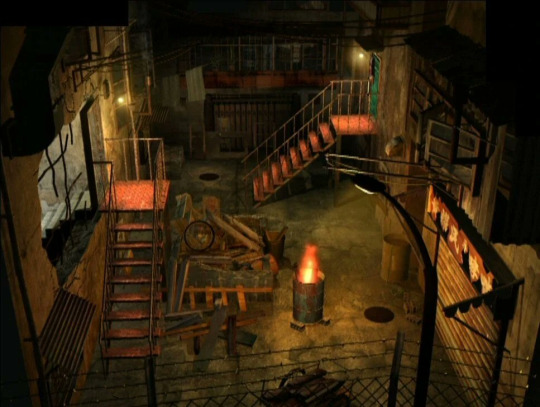
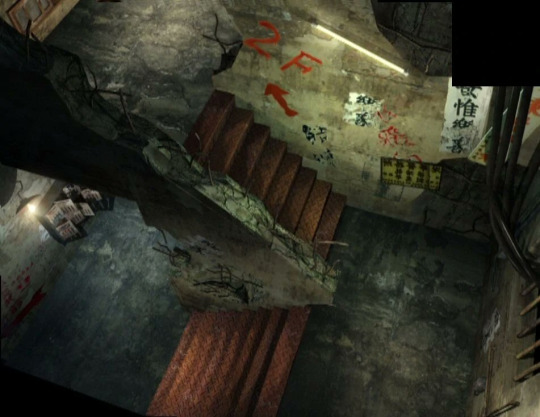
Shortly after the release of Koudelka, Sacnoth's initiated the development of Shadow Hearts, the first episode from a cult RPG trilogy exclusively designed for the Playstation 2. In good Japanese fashion, the game proposes an anachronistic yet visually suggestive depiction of Kowloon, portraying its architectural style and degree of decay as it existed in the late twentieth century, despite the fact that the game's events take place during the nineteen twenties.
Just as noteworthy is the almost complete absence of any inhabitants, which inadvertently make this portrayal of the quarter eerily reminiscent of the state in which it was found circa 1993 or 1994, as local authorities brought the long, arduous eviction project to a close.
Shenmue II - SEGA AM2 - 2001
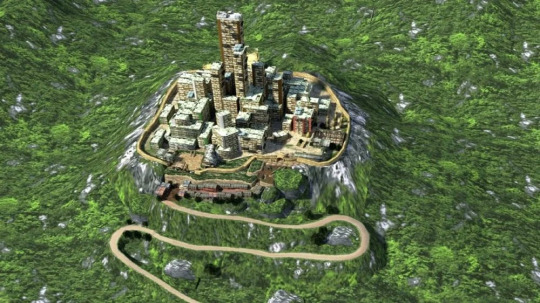
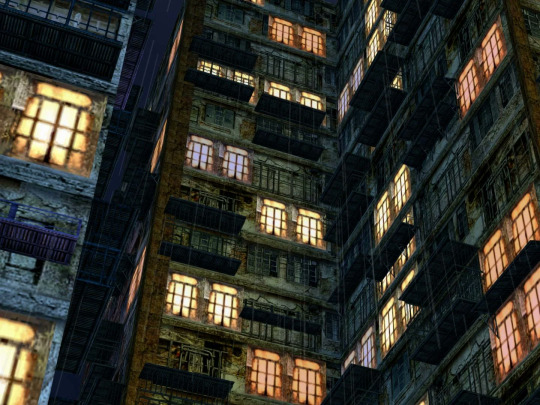
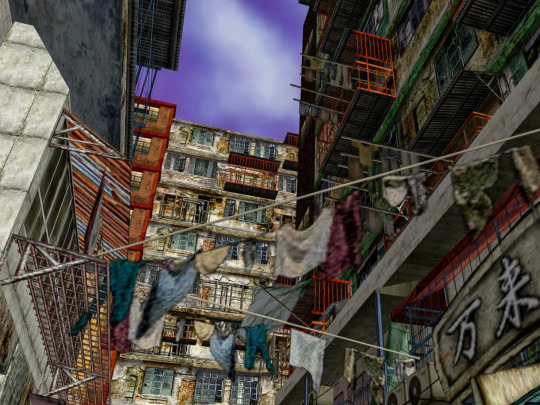
Shenmue II exhibits the most complete and period-accurate video game representation of Kowloon to date. While more recent games featuring this area may represent a number of its aspects with the aid of improved visual fidelity, none features it with such depth as this masterpiece of masterpieces. More than mere background decoration, Kowloon exists in the Shenmue series as a crucial, climacteric element of its modern epic narrative.
It is a well known fact that Yu Suzuki and his team conducted extensive research of the region so as to achieve a result that impresses even to this day. It must be noted, however, that they have similarly taken a fair share of creative liberty when converting the area to best align with the themes they wished to explore. Further reading is required for a more complete context in this regard, namely how this area ties with an early Dreamcast tech demo design which fans lovingly named Tower of Babel. Ostensively, technical limitations did curtail the degree of precision in which the surrounding area could be replicated. The aerial view from the cutscene in which Ryo Hazuki arrives on location places Kowloon at an imaginary degree of elevation over surrounding vegetation. In the year of 1987, during which the game is set, the actual enclave stood perfectly levelled with a myriad of other modern buildings, undoubtedly more than could be reproduced under the circumstances. These trifling considerations aside, Shenmue II entirely succeeds in capturing the vibrant life and mesmerizing beauty of the destitute and decayed urban agglomeration, in a way that it was deemed entirely impossible at the time of its release.
For reasons entirely related to per post content limitations imposed by Tumblr, this article will be continued in PART II.
#china#hong kong#kowloon#kowloon walled city#videogames#Kyu-Ryu-Tou#riot city#saga frontier#kowloon's gate#shenmue ii
427 notes
·
View notes
Text






kowloon walled city (the last pic is a theme park inspired by kowloon) in my last lucid dream i found myself in a similar environment and explored it a little cool af experience
24 notes
·
View notes
Text
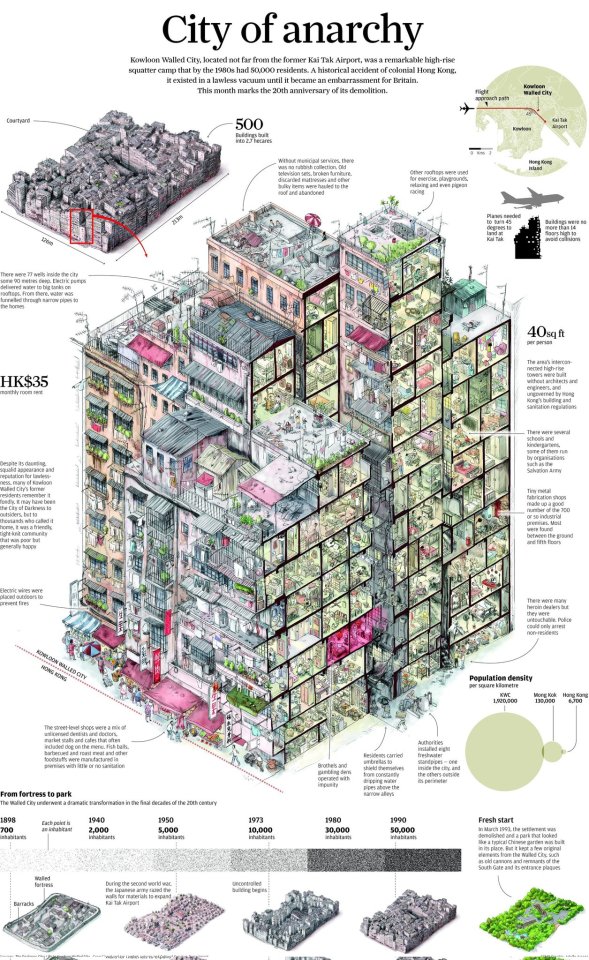


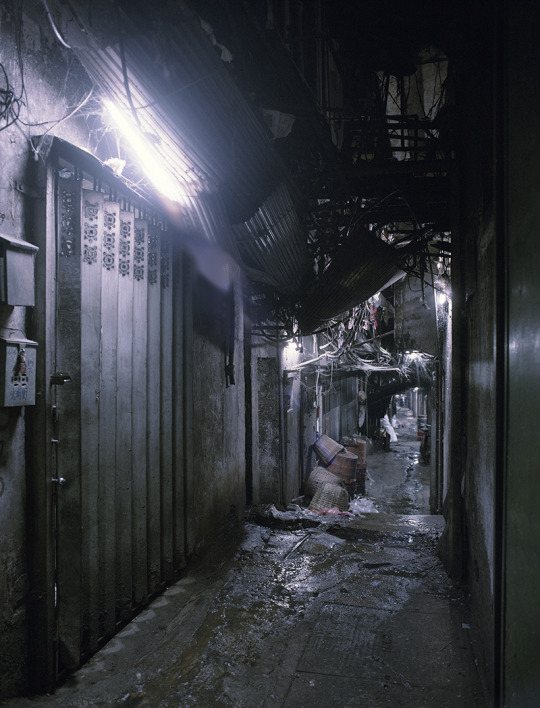
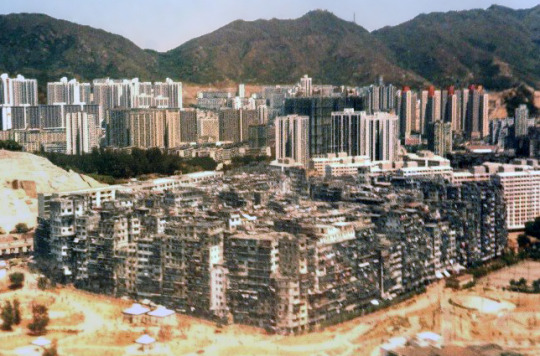
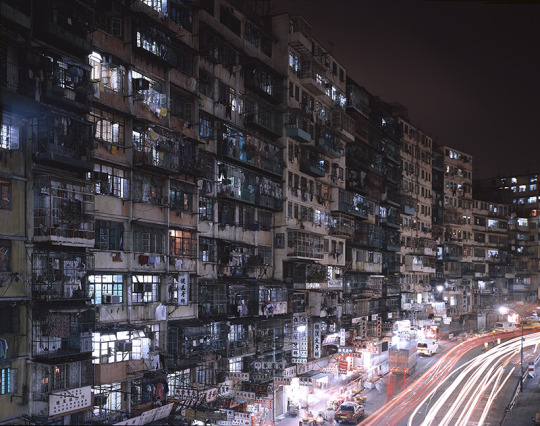

Various images inside and outside of Kowloon Walled City (demolished in 1993-1994), and replaced with a park because we can't have anything nice or not controlled by the state.
#kowloon#kowloon walled city#urban landscape#look how they massacred my boy#or however the city thought of itself
99 notes
·
View notes
Text
Submitted via Google Form:
Do you have any ideas on how to world build a massive overpopulated city but it isn't dirty or in shambles. Basically, everything is neat, clean and works well. Just a massive population density. I'm thinking 30k people per km2 with a total area of 1200km2. When I find images or descriptions of such high density populations I often see buildings that kind of look all rundown and slummy (not to mention high crime rates and poor if not in poverty) Or is that like.. impossible if you have such a massive crowd in one spot?
Tex: “Overpopulated” implies “more residents than the infrastructure can accommodate”. What’s considered dirty or in shambles is the result of a garbage disposal system that isn’t structured to the amount of residents + guests (tourists, relatives, holiday-goers, etc). To have a city or other area properly equipped with the amount of employees to maintain sanitation and employees to repair buildings degrading over time, it must have properly-allocated funds, and enough of it. This is at its core a governance and taxation issue, not a morality issue of “just don’t make it dirty”. Crime and poverty are the natural result of neglect by one’s government, both at a local and larger level, which requires a lot of forethought in the amount of space an individual needs to live in private and public spaces.
Utuabzu: I’m going to assume you want a prosperous city with very high density. Happily for you, there are many examples of this in the real world. Density occurs when the demand for living/working space in an area is greater than the physical space available, meaning it is worthwhile to create more space by building upwards. This naturally occurs in the centres of all cities, because proximity to one another is a big draw for both people and organisations. In the absence of any limiting factors, this is usually counterbalanced by cost making it cheaper to build outwards and simply accept longer travel times, resulting in a relatively gradual gradient of density from rural periphery to urban core.
You get greater density when there are limiting factors on outward expansion. These can be geographic, like in the case of Singapore, Hong Kong and Manhattan (all islands), legal, like in the case of Vancouver, London and many other cities (laws and policies preserving green belts or valuable farmland), or political, such as was the case for Hong Kong and still is for Singapore (an international border acting as a constraint). Often it’s more than one of these. While places like Kowloon Walled City can exist - and it in particular is a very interesting case study in urban form - for the most part very high density occurs when people want to live and work somewhere, which usually means it’s a pretty nice place to be (at least in comparison to the other options anyway). Tokyō is the world’s largest city, with 36 million people (11 million more than the entire continent of Australia), but I don’t think I’ve ever heard anyone accuse it of being dirty or in a shambles.
It is also worth noting that density doesn’t necessarily look like skyscrapers towering overhead. Paris has a population density of almost 25k/km² when one excludes the outlying woodland park areas, and is predominantly mid-rise buildings. The 11th Arrondissement of Paris outdoes what you ask for, with a population density just under 40k/km², and is mostly historic midrise buildings. Other European cities like Barcelona, Naples and Thessaloniki have a similar development pattern, largely due to having been built mostly before elevators existed or were commonplace, which naturally limited building heights to around 5 to 6 floors (any higher becoming increasingly impractical for the sheer number of stairs).
Feral: The International Residential Code has the minimum size required for a house to be 120 sq ft/11.1 sq m. That’s a pretty standard secondary bedroom size in suburban USA. Your population density would have one person per 33.3 sq meters, which sounds great except that doesn’t account for any non-residential use space. Given your desire for the entire city to be exceptionally well-maintained, free of crime, and presumably a wonderful place to live, that means you need great air quality, multiple green spaces, art, food, entertainment. And your city’s overall size is massive. It’s 20.5 times the size of Manhattan, 11.3x the size of Paris, and 1.6x the size of Singapore - to name a few of the cities brought up in previous answers. This kind of sprawl does not make for good urbanization - just ask the city of Los Angeles, which is almost exactly the same overall size as what you’re aiming for but has a tenth of the density.
A few articles to get you started on density, urbanization, and sprawl:
Cities Really Can Be Both Denser and Greener by Emma Marris
Is There a Perfect Density? By Michael Lewyn
When is density good, and when is it harmful to cities? By Philip Langdon
Making cities more dense always sparks resistance. Here’s how to overcome it. By David Roberts
27 notes
·
View notes
Text
I dreamed I was some sort of agent for the "Allies" (by which I apparently meant the western world) going into an anarchist enclave (built something like Kowloon Walled City) on a mission to try to get them to accept aid because we were worried that they were headed towards ecological collapse, and this somehow would be a bad thing in our continuing cold war with the soviet union. I had to contact the five main gang leaders within the enclave, and the first I made contact with was in the back of a music co-op where they'd somehow moved an entire battleship in. A beached battleship, obviously. I woke up before I found out where the other leaders were located, because I lost a lot of time because my initial entry into the city was incorrect. I was sent into what we thought was the "main entrance", which was on the second floor of a new york city car park, but it turned out to be a back door into the dressing room of a troupe of polyamorous theater actors. They were at least able to redirect me to the main entrance. They suggested I join them for an orgy but I had a job to do, so I declined. An annoyed catgirl said I wouldn't be able to get in the main entrance, but she was wrong and I had no issues.
I don't know why my dreams keep taking place in worlds where the USSR still exists. Also my dream brain has a bad idea of what anarchism is, apparently. I don't know why there were gang leaders, and the whole place had more of a "crime den" vibe in the midst of a cold war between rival gangs, rather than any actual anarchist society.
87 notes
·
View notes
Text
youtube
Hi everyone! In this video, I filmed myself jamming with the song mode of the Elektron Syntakt on one of my tracks with guitar, in the Kowloon Walled City Park in Hong Kong. The song mode gave me the freedom to play guitar over the music while still tweaking delay, reverb, and filters as I like. It's a bit of a techno, dance electronic style track.
I recorded the guitar with my Sony PCM-D100. As you can hear, I completely modified and aligned the guitar sound with overdrive, amp, delay, reverb, and equalizer in my software, as the raw guitar didn't really fit in the mix. The final result is a bit noisy and maybe a bit unique, but I hope you enjoy it.
Don't forget to like, comment, and subscribe for more content. Thanks for your support! ✨
You can find me on :
YouTube : https://youtube.com/@naivejam?si=UMP3edp4DJdGJ0qo
Instagram : https://www.instagram.com/naivejam/profilecard/?igsh=NWJnZTVwa3dsejdz
Stuff used :
• Elektron Syntakt
• Blue Lava Guitar
• Sony PCM-D100
• iPhone 14 for video
• Arturia AudioFuse 4
• MacBook Pro 2015
#Youtube#elektronika#hong kong#electronic music#creative process#music producer#outdoors#drum machine#sequencer#machinedrum#noise#hk#chill music#technovibes#kowloon#music jam#guitar#guitareffects#gearposting#gears#music instruments
2 notes
·
View notes
Text
aC on vacation
so here's a summary of day 1, more later when i feel like getting the photos off my phone
got to a hotel where my brother and his wife are staying because fuck driving several hours when i should be asleep. google maps sends me to a parallel fucking dimension where the hotel was built on the opposite side of the city. also the roads here are somehow iced over when most of the road leading here wasn't so go figure. we try to get dinner and almost everywhere is closed on account of the snow, except for this hole in the wall chinese takeout place, because if you can count on any place to be open, it's one of these. they make the best general tso's chicken i've had in a long time, it turns out
woke up at like four in the morning for our 7:30 am flight, because by airport logic being only two hours early is tantamount to no-showing. this was right after shit got polar so the roads were covered in ice. at the parking place, i tried and failed to get past a barrier before the lever arm came back down again because it was on a slight incline and i couldn't get enough traction to clear it before it closed. this happened like SIX TIMES, it was some Three Stooges shit
our shuttle takes us over to the airport. i stick to my brother like a little kid to his mom because he's done this before and i have not. the flight is going to be five hours. which doesn't make sense to me because the return flight is only supposed to be three and a half. i dunno, maybe headwinds or something? i'm not a fucking pilot. i'm anxious to get this part over with because, again, never flown before. after waiting for clearance for what feels like forever (justified, on account of ice) we're finally in the air. it's... nothing? it's kind of mundane and somehow boring. one of the greatest achievements in human history and the only difference between this and being on a bus packed full of strangers is there's no road to rumble against that eventually numbs your butt, and also it's several degrees of magnitude faster than a bus i suppose
we arrive at LAX and if i didn't already feel like a fish out of water then oh boy. how the fuck do people live like this? how do you figure out who's supposed to go where? it's like living in the Kowloon Walled City, thought the guy who grew up imagining anywhere big enough to have a walmart counted as a "big city"
we get another shuttle, this one absolutely cramped with people, to get to the rental car place. my brother argues with the guy (who isn't even actually *physically* there, he's somehow doing sales over Zoom or some shit) for like half an hour before telling him to cancel the whole thing. turns out they wanted close to four times what he was originally quoted and weren't budging. we decide to get an uber to the closest In-n-Out, because we're in California, and also starving, so why not. we're standing in line looking a bunch of huge dorks carrying around suitcases. if i was ever going to be mugged in broad daylight it would be right here, right now. i order a double double combo, swap out the tomato for onions because raw tomato has all the texture and flavor of a balloon filled with wet sand, and onions and cheeseburgers go together like chocolate and peanut butter. the burger's okay, i guess. the fries are the most boring fries i've ever eaten. at least it's probably the cheapest meal i'll have while i'm here
we take another uber to get to our airbnb, about 45 minutes out. every other billboard is this guy

we arrive and immediately notice something is wrong. it was advertised as 4 bed. there are TWO double beds. this is pretty good if you're two married couples and not so much if you're the double third wheel travelling with two married couples. there's one room with a folding leather futon and not much else that seems kind of pointless and i decide this is where i'll stay. turns out that futon is the least comfortable sleeping surface ever manufactured in human history and there are maybe three exact positions that are even kind of comfortable enough to fall asleep in while lying on it and not having an iron bar press up into your lower back or your shoulderblade or the back of your neck
END OF DAY 1
7 notes
·
View notes
Note
one of the mosques in hong kong has a halal dim sum restaurant. if u wanna get dim sum in hong kong like a tourist. idk how far 2$ will get u tho i am sorry. the park where kowloon walled city used to be is free tho! theres also some other nice parks. also some temples are open to the public if thats ur jam… or just ride the streetcar
Anon I love you
11 notes
·
View notes
Text
Map: Exploring the World by Victoria Clarke
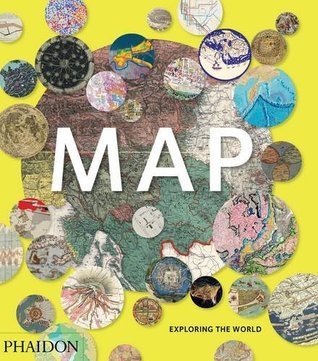
Read time: 2 Days Rating: 4/5 Stars
The Quote: There are many different kinds of map. Part science, part artistic design, the map as a concept is complex and ever changing, encompassing a range of different forms of graphic expression and display. — John Hessler
Most of this review will just be a list of my favourite maps or notable inclusions and some interesting quotes. Honestly, this is a hard book to review purely because it is what it says on the tin, a collection of maps. Let's all be very honest here Map is a book for a particular kind of person. There are a number of fields that may find it of interest but for most people, it is just something that would not appeal. Some groups of people I think this might appeal to, the obvious is those with an amateur interest in cartography (ie the intended audience), those with an interest in anthropology, potentially art fans, or those looking to fill a reading prompt. It is an appealing coffee table book though, there are some really nice and unusual pairs of illustrations that you are likely to find anywhere else. Of the categories I listed I'm actually the anthropology (though I am using it for a prompt too).
To give you an idea of the layout of the book. For the most part, the maps are presented in sets of two. Each set is tied by having a similar topic, style or theme, though very few have similar colour themes. In most cases, the maps were created decades or longer apart. Each map is captioned by the title, year of creation and artist/ cartographer on one line. The second line has the materials it's made of and on, its dimensions and where it is currently housed. Under this is an approximately 200-word write-up on the map, its importance and the creator. I was reading this at night and found it to be quite like watching a match of tennis or test cricket (sometimes at least). Just one more game, just one more over or in this case just one more page. I found it to be quite a calming read. That said there are quite a lot of random facts I didn't know. Like where Brazil got its name from, a tree.
From here the review just devolves into a list of maps and quotes.
Olafur Eliasson's real-time neon light Daylight Map is the first one that made me this I have to mention this
City of Anarchy by Adolfo Arranz is a brilliant cutaway of Kowloon Walled City in Hong Kong
1247s A Map of the Stars by Wang Zhiyuan is stunning
Survival Map 1992-1996 (The Siege of Sarajevo) is such a dichotomy. It is a brightly coloured beautiful thing for a very dark time in human history.
Willamette River, Oregon by Daniel Coe is a gorgeous map and the colouring is fantastic.
Map of Days is a wonderful idea for a self-portrait by Grayson Perry.
Mapping the Brain by the Human Genome Project is a whole other way to present the human brain and I want it on my wall
The embossed Map of Maine is gorgeous and I want to such it.
The interactive Iceland Illustrated is a fantastic
In 1989 the-then American Cartographic Association recommended that rectangular projections should not be used at all for general-purpose world maps, but Peters' contention that we should scrutinize the way we predict the world remains valid. (p.156)
I have never seen the Upside Down World Map and I live in Australia.
I really like A Map of Vesuvius. It is a good way to show the impact of a lava flow.
“Few rulers have had as much reason to fear their enemies as King Henry VIII" — (p.176) Truer words have never been spoken.
Carta Marina is so stunningly detailed. I wish I could see it in all its in-person glory
Chicago, USA is just a smart piece of design work
Any given place holds an infinite number of things that can be mapped. An individual neighbourhood has streets and houses and parks - all of which we might expect to see on a map. But it also has power lines and Christmas lights and sounds and graffiti and people with their own aspirations and all this can be shown cartographically if we simply take the time to collect the information." — (p. 193)
This isn't the first map I've seen of Mecca but it is probably my favourite, its the colouring
Serio-Comic War Map for the Year 1877 by Frederick W. Rose is humorous.
"named Bom Bahia (good bay) by the Portuguese, Bombay was ceded by Portugal to Englan as part of Catherine of Braganza's dowry when she married Charles II of England in 1661" — (p.226) How did I not know this? I mean I'm not surprised it was all to do with marriage and dowries but I didn't know
Locals and Tourists by Eric Fischer is a wonderful project idea. I'd love to see it done in other cities. Also, I like the colour choices.
The Earth Seen Through the Sphere of the Stars by Andreas Cellarius is so pretty and so intricate it looks like it belongs on a ceiling somewhere.
2MASS Redshift Survey by John Hurchra, Thomas Jarrett and others I also want on my wall. It's mapping light wavelengths look it's pretty ok.
The Court Game of Geography c. 1840-3 by W. & H. Rock is a fantastic deck of cards and I want it. I would love to see the whole deck, the book only has one suit (hearts, Europe). Honestly, I think we could use this again now.
2 notes
·
View notes
Text
re: Kowloon Manifesto (or a supreme procrastination rant)
I've been doing some reading on the Kowloon Manifesto concept from my boy @centrally-unplanned (shoutouts homie), and my personal take on it is that the thing with the Kowloon Walled City was that it never had any real services such as trash, and the planning was haphazard at best, but people still had plants, and if you were to do a Kowloon Walled City by design, what you would do would be to set up gardens in that area, and gardens that could ideally fulfill the roles of both landscaping/gardening so as to be aesthetically pleasing, and also as a food source, because this is actually all possible thanks to permaculture and agroforestry and all this entire field of study that's basically the domestication of an ecosystem, and managing plants native to the area (and the ones that aren't native that were introduced). The problem with those is and has always been that they have ridiculous yields (good!) but they are godawful to automate and don't scale into giant plots, which makes them both labor intensive and complex for industrial agriculture. Well, if you're setting up a thousand small gardens, you don't need to worry about that, and they help with landscaping and contact with nature, which has a bunch of benefits (notably, air quality!)
This is where you can push the entire thing even further into "high modernism bullshit" and just go down the route of "what if everything was Habitat 67" - because a) people won't just live in a concrete chaos, even in Kowloon they painted and built their own annexes and added their own personal touches, and b) the remarkable thing about Habitat 67 is that it fits, in about 120m by 300m - so 36000 m^2, or 0.036 km^2 worth of ground (and then shooting upwards), 146 residences. Assuming, say, that the averaged out population between families (or groups of roommates) of 3-5 and people who live by themselves or with a partner averages out to about 450 people living there, that's a population density of 12500 persons per square kilometer, on something only about 12 stories tall. This beats out Tokyo!
Habitat 67 was designed to specifically allow residents to still have a landscape garden no matter what. That was one of the primary design considerations, which means that if you push that landscape garden act into the full out food garden aspect, you can have something which starts veering into The Hanging Gardens.
I lived in Sao Paulo, a lot of it was 20 stories tall and higher, so you could just keep pushing that limit further and further, with interconnected gardens and small parks and all the services that come with not being Kowloon Walled City such as decent light and water and garbage collection, you could have something much, much denser - and frankly much more livable than the Midwestern hell that is Cincinnati.
4 notes
·
View notes
Text
Tumblr is Kowloon Walled City - chaotic, ungovernable, largely self-assembled, and yet a functional and thriving community

Also a cautionary tale as it was torn down and turned into a park!
“Tumblr is my bedroom” this “tumblr is a pinboard” that
Tumblr is an apartment complex with thin walls and every so often you just have to listen to your neighbors say the most deranged shit imaginable
93K notes
·
View notes
Text
Discover Hong Kong in 3 Days: Hidden Gems, Top Attractions, and Insider Tips
When to Visit Hong Kong Hong Kong’s subtropical climate makes it a year-round destination, but the best times to visit are from October to December when the weather is pleasantly cool and dry. Avoid the summer months (June to August) if you’re not a fan of high humidity and potential typhoons.

Day 1: The Iconic Hong Kong Experience Morning: Victoria Peak and Tram Ride - Victoria Peak: Start your day with a ride on the historic Peak Tram to Hong Kong’s highest point. Enjoy breathtaking views of the skyline and harbor from the Sky Terrace 428. - Insider Tip: Arrive early to avoid long queues for the tram.


Drone view of Hong Kong city, sea, kowloon city and Hong kong harbor Afternoon: Central and Mid-Levels Escalator - Explore Central: Wander through the vibrant streets of Central, stopping at Man Mo Temple, a serene escape with intricate incense coils. - Mid-Levels Escalator: Ride the world’s longest outdoor covered escalator system and hop off to explore trendy cafes and boutiques.

Evening: Star Ferry and Symphony of Lights - Star Ferry: Take a ride across Victoria Harbour for stunning views of the city’s skyline, especially as the sun sets. - Symphony of Lights: Watch this dazzling light and sound show from Tsim Sha Tsui Promenade for a perfect end to your first day.

Day 2: Cultural Immersion and Local Flavors Morning: Lantau Island and Big Buddha - Ngong Ping 360 Cable Car: Enjoy panoramic views on your way to Lantau Island. - Tian Tan Buddha (Big Buddha): Climb 268 steps to see this iconic statue up close and visit the Po Lin Monastery. - Hidden Gem: Explore the Wisdom Path, a serene trail with wooden pillars inscribed with ancient prayers.
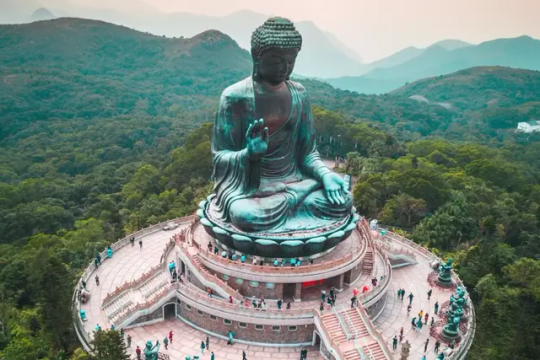
Afternoon: Tai O Fishing Village - Tai O: Discover Hong Kong’s traditional stilt houses and sample local delicacies like dried seafood and Tai O donuts. - Pro Tip: Take a boat ride to spot pink dolphins if you’re lucky!

Evening: Mong Kok and Temple Street Night Market - Mong Kok: Dive into the vibrant chaos of the Ladies’ Market and Sneakers Street. - Temple Street Night Market: Shop for souvenirs and enjoy street food like stinky tofu and egg waffles.
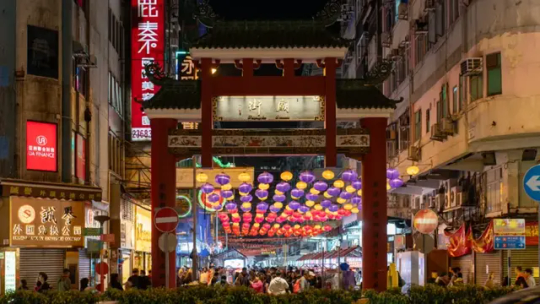
Day 3: Off-the-Beaten-Path Adventures Morning: Dragon’s Back Hike - Dragon’s Back: Hike this beginner-friendly trail for stunning views of Shek O and the South China Sea. - Insider Tip: Pack water and start early to beat the heat.

Afternoon: Repulse Bay and Stanley Market - Repulse Bay: Relax on the sandy beach and visit the colorful Tin Hau Temple nearby. - Stanley Market: Stroll through this charming market for unique finds and enjoy a waterfront lunch.

Evening: Kowloon Walled City Park - Kowloon Walled City Park: End your trip by exploring this historic park with its tranquil gardens and fascinating remnants of the former walled city.

Gastronomic Highlights - Dim Sum: Don’t miss Tim Ho Wan, the world’s cheapest Michelin-starred restaurant. - Cha Chaan Teng: Try local cafes for milk tea, pineapple buns, and egg tarts. - Street Food: Sample curry fish balls, siu mai, and roasted chestnuts.


Fun Facts About Hong Kong - Hong Kong has more skyscrapers than any other city in the world. - The city’s name means “Fragrant Harbour” in Cantonese. - The Peak Tram’s steepest incline is 48%. - Pink dolphins, unique to the region, can sometimes be spotted near Lantau Island. - The Tsing Ma Bridge is longer than San Francisco’s Golden Gate Bridge.

Travel Tips and Tricks - Octopus Card: Essential for public transport and even convenient store purchases. - Currency: Carry some Hong Kong dollars, but many places accept credit cards. - Language: English is widely spoken, but learning basic Cantonese phrases can enhance your experience. - Apps: Download Citymapper and Google Translate for seamless navigation and communication.

Explore the vibrant, bustling streets, serene temples, and stunning natural landscapes of Hong Kong in just three days with this carefully curated itinerary. Whether it’s your first visit or a return trip, Hong Kong never fails to amaze! Click here to Book a hotel room in Hongkong Cheap flight to Hong Kong Click Here to Top Activities in Hong Kong Click here to Tickets to Peak Tram Click here to Hong Kong City cards Click Here to Hong Kong Cruises Hong Kong Airport Express


Read the full article
0 notes
Text
Top 10 Unique and Underrated Attractions in Hong Kong
Towering buildings, busy marketplaces, and a lively nightlife are the hallmarks of Hong Kong. Beyond the well-known sights like the Star Ferry and Victoria Peak, the city has a lot of interesting hidden places that are just waiting to be explored. These undiscovered treasures present a distinct viewpoint on Hong Kong, exhibiting its abundant natural beauty, history, and culture. From serene parks and traditional villages to creative art spaces and picturesque hiking trails, there's so much more to explore in this dynamic city. Whether you're a first-time visitor or a seasoned traveler, uncovering these lesser-known attractions can make your trip to Hong Kong truly unforgettable. In this guide, we'll introduce you to some of the best-kept secrets of Hong Kong, highlighting the unique and underrated places that you shouldn't miss. Get ready to step off the beaten path and experience the city's hidden wonders.
Here are some unique and underrated attractions in Hong Kong:

1. Walled City Park in Kowloon:
Tucked away in the center of Kowloon is the historical jewel known as Kowloon Walled City Park. It was formerly a crowded, unruly area, but it has been turned into a lovely park that honours its fascinating history. The park has calm pavilions, traditional Chinese gardens, and in-depth historical exhibits about the walled city. It offers a tranquil escape from the bustle of the city as well as an enlightening look at Hong Kong's distinct past.
2. The Bird Garden on Yuen Po Street:
The serene Yuen Po Street Bird Garden is a haven in the busy metropolis. For bird lovers, this traditional Chinese-style garden is a favorite. Locals are seen interacting with one another, purchasing bird-related goods, and taking walks with their pet birds here. The lovely layout of the garden, combined with the soothing sound of chirping birds, creates a calm and charming ambiance that is ideal for a leisurely stroll.
3. The Police Married Quarters, or PMQ:
A creative hotspot, is situated in the busy Central neighbourhood. It was originally constructed as accommodation for married police officers, but now local designers, artists, and business owners use it as a workspace. There are several different stores, galleries, and restaurants at PMQ. It's a terrific spot to find unusual goods, take in modern artwork, and encourage regional ingenuity.
4. Tai O Fishing Village:
Fishing Village Tai O is often referred to as the "Venice of Hong Kong." Tai O Fishing Village provides an insight into the city's customs surrounding fishing. This little community on Lantau Island is well-known for its seafood, lively market, and stilt cottages. Tourists may see the stilt dwellings up close and potentially even spot pink dolphins by taking a boat excursion. The calmer pace and rustic beauty of Tai O provide a welcome counterpoint to the fast-paced lifestyle of the city.
5. The Monastery of Ten Thousand Buddhas:
The Ten Thousand Buddhas Monastery, a hidden treasure in Sha Tin, provides a calm spiritual experience. It is not a functioning monastery, despite its name, but it does have an amazing collection of more than 10,000 Buddha statues. Hundreds of golden Buddha statues, each with a distinct expression and stance, line the ascent to the monastery. The hike is worthwhile because of the serene surroundings and breathtaking vistas at the summit.
6. Nan Lian Garden and Chi Lin Nunnery:
Traditional Chinese architecture and gardening can be perfectly observed on Diamond Hill at Chi Lin Nunnery and the nearby Nan Lian Garden. The nunnery is a sizable Buddhist temple complex with peaceful lotus ponds and wooden structures constructed in the Tang period style. Nan Lian Garden is an exquisitely designed park featuring well-kept vegetation, water elements, and classic wooden buildings. When combined, they provide a calm haven in the center of the city.
7. Village of Lai Chi Wo:
Northeastern New Territories is home to the well-preserved Hakka village of Lai Chi Wo. It's a great place for hikers and environmental enthusiasts, surrounded by mangroves and beautiful forests. The community itself has temples, ancestral halls, and typical Hakka homes. Visitors can travel back in time and enjoy a bit of Hong Kong's rural heritage by exploring Lai Chi Wo.
8. The Island of Peng Chau:
A peaceful escape from Hong Kong's bustling city is provided by the small, serene island of Peng Chau. The island is well-known for its rustic charm, beautiful walking trails, and easy-going vibe. Peng Chau Fisherman's Village, the Finger Hill hiking trail, and a number of exquisite temples are some of the main attractions. Peng Chau is a great place for a day trip because of its slower pace and small-town atmosphere.
9. Lei Pai and Chau Ap Lei:
A bridge connects the small island of Ap Lei Chau to Hong Kong Island's southern coast. It is well-known for the charming Aberdeen Harbor, the old temples, and the neighbourhood fish market. The smaller, deserted island of Ap Lei Pai is reachable from Ap Lei Chau after a short stroll. The hike is a wonderful way to take in Hong Kong's natural beauty and gives breathtaking views of the surrounding waterways.
10. The Back Trail of the Dragon:
The Dragon's Back Trail is a must-see for nature lovers. Enjoy breathtaking views of the South China Sea, mountains, and coastline from this well-liked hiking track, which is one of the greatest in all of Hong Kong. All skill levels of hikers can enjoy this very easy walk. After completing the hike, unwind at Big Wave Bay, a stunning beach ideal for surfing and swimming.
Conclusion
Exploring the unique and underrated attractions in Hong Kong offers a refreshing break from the usual tourist spots. These hidden gems allow you to experience the city's rich culture, history, and natural beauty in a more intimate and personal way. From the tranquil Tai O Fishing Village to the vibrant street art of Sham Shui Po, each destination brings its own charm and story, making your Hong Kong tour truly special. Visiting these lesser-known attractions provides a deeper understanding of Hong Kong's diverse character. You can wander through the lush landscapes of Dragon's Back, admire the serene beauty of Nan Lian Garden, or explore the fascinating exhibits at the Hong Kong Heritage Museum. Each place reveals a different facet of the city, ensuring your trip is full of surprising and memorable moments. In conclusion, while the iconic landmarks of Hong Kong are definitely worth visiting, taking the time to discover its unique and underrated attractions will enrich your travel experience. These spots offer a unique glimpse into the heart and soul of the city, away from the crowds and hustle. So, when planning your next Hongkong tour, be sure to include these hidden treasures in your itinerary for an unforgettable adventure.
0 notes
Text

The Kowloon Walled City was a densely populated enclave of China within the boundaries of Kowloon City in Hong Kong. Built as an Imperial Chinese military fort, the walled city became a de jure enclave after the New Territories were leased to the United Kingdom in 1898. Its population increased dramatically after the end of the Japanese occupation of Hong Kong during World War II, attracting mostly refugees fleeing the renewed Chinese Civil War. The walled city was crossed by alleyways, often only 1 to 2 metres (3.3 to 6.6 ft) wide, with poor lighting and drainage. Construction went unregulated, and most of the roughly 350 buildings were built with poor foundations and few or no utilities. The population was estimated at 33,000 in 1987, giving the walled city a density of around 1,255,000 per square kilometre (3,250,000/sq mi), making it the densest location in the world at the time. The walled city was demolished between 1993 and 1994 and the site is now occupied by Kowloon Walled City Park.
0 notes
Text
Hongkong Kota judi? coba kita cari tau tips dan trik jalan jalan ke hongkong versi Okeplay777
Kapan lagi si kamu bisa jalan jalan ke luar negri? apa lagi ke hongkong. nih tips and trick buat jalan jalan ke hongkong versi Okeplay777!!. Jalan-jalan ke Hong Kong bisa menjadi pengalaman yang menarik dan tak terlupakan. Berikut ini beberapa tips dan trik yang dapat membantu Anda dalam perjalanan tersebut:
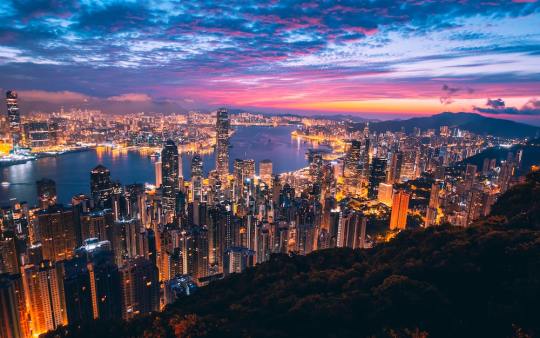
Pilih waktu yang tepat: Hong Kong memiliki cuaca yang beragam sepanjang tahun. Suhu paling nyaman biasanya terjadi antara Oktober hingga Desember, ketika udara lebih sejuk dan cerah. Jika Anda ingin menghindari keramaian, hindari kunjungan selama liburan nasional atau festival populer.
Pilih akomodasi yang sesuai: Pilihlah hotel atau penginapan yang sesuai dengan kebutuhan dan anggaran Anda. Hong Kong menawarkan berbagai macam opsi akomodasi, mulai dari hotel mewah hingga hostel budget. Pastikan lokasinya strategis agar lebih mudah untuk menjelajahi kota ini.
Siapkan visa dan paspor: Pastikan Anda telah memeriksa persyaratan visa dan paspor sebelum perjalanan. Beberapa negara mungkin memerlukan visa sebelum masuk ke Hong Kong. Pastikan paspor Anda masih berlaku setidaknya enam bulan sebelum tanggal kedaluwarsa.
Rencanakan rute perjalanan: Buatlah rencana perjalanan yang rinci untuk mengoptimalkan waktu Anda. Hong Kong memiliki banyak tempat wisata menarik, seperti Victoria Peak, Kowloon Walled City Park, Pulau Lantau, dan berbagai pasar malam. Periksa peta dan jadwal transportasi umum untuk membantu Anda merencanakan rute dengan baik.
Gunakan transportasi umum: Transportasi umum di Hong Kong sangat efisien dan andal. Anda dapat menggunakan MTR (Mass Transit Railway) untuk berpindah antar-daerah dengan cepat. Opsi lainnya adalah bus, trem, dan kapal feri. Pertimbangkan untuk membeli kartu Octopus, yang dapat digunakan untuk membayar berbagai moda transportasi.
Cicipi makanan lokal: Jangan lewatkan kesempatan untuk mencoba makanan lokal Hong Kong yang terkenal. Nikmati hidangan seperti dim sum, pangsit won ton, siumai, dan pai daging. Jangan lupa mencicipi kue tradisional Hong Kong, seperti egg waffle atau pineapple bun.
Simpan nomor darurat penting: Simpan nomor darurat penting, termasuk nomor telepon darurat lokal dan kontak konsulat negara Anda. Juga, pastikan Anda memiliki salinan dokumen penting seperti paspor dan kartu identitas di tempat yang aman.
Bawa peta dan aplikasi pemandu wisata: Bawa peta fisik Hong Kong atau gunakan aplikasi pemandu wisata untuk membantu navigasi Anda. Aplikasi seperti Google Maps atau Citymapper dapat membantu Anda mencari rute terbaik, memeriksa jadwal transportasi, dan menemukan tempat-tempat menarik.
Persiapkan mata uang lokal: Pastikan Anda memiliki mata uang lokal, yaitu dollar Hong Kong (HKD). Banyak tempat menerima kartu kredit, tetapi sebaiknya juga memiliki uang tunai untuk transaksi kecil atau di tempat yang lebih tradisional.
Patuhi peraturan lokal: Pastikan Anda memahami dan mematuhi peraturan dan budaya lokal Hong Kong. Hormati tempat-tempat suci dan pantangan budaya yang berlaku. Selalu periksa aturan dan peringatan di tempat-tempat wisata yang Anda kunjungi.
Semoga tips dan trik ini membantu Anda dalam perjalanan ke Hong Kong. tapi ada lagi nih tips yang menarik untuk anda mengumpulkan modal untuk jalan jalan ke hongkong!. dengan bermain di okeplay777 anda sudah dapat mendapatkan kesempatan menang hingga ratusan juta rupiah dengan situs judi slot dan sportsbook Real money terbesar se Indonesia!!.. tunggu apa lagi segera daftarkan diri anda di okeplay77 untuk mendapatkan kesempatan menang yang besar!!!
#sportsbook#judibola#judi slot#judislotonline#judibolaonline#situsjudi terpercaya#situsjudislot#situsjuditeraman#situsjudislotterpercaya
1 note
·
View note